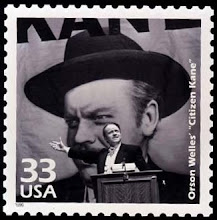It’s hard to imagine two films as different from each other
as Beautiful Thing (Macdonald, 1996) and Happy Together (Wong, 1997). One traces the beginning of a romance while
the other chronicles the slow death of one.
One is heavily stylized, with saturated colors, handheld intimacy, and
grainy black & white, while the other has TV movie production values. One story is very linear, while the other is
more elliptical. One is sexually coy,
with a cast of unknowns, while the other decidedly isn’t on either count. They take place on the other side of the
globe from each other, with family and community playing a big part in one,
while the other is a tale of cultural alienation, with the two main characters
virtually the only ones with speaking parts.
Even the respective approach each film has to its title is polar
opposite, for while Beautiful Thing is puppy-dog sincere, the men in Happy
Together are anything but.
But if there’s one thing they have
in common (besides their gay protagonists), it’s about how the laws of attraction
can transcend all sorts of barriers and obstacles, for better and for
worse. As The Turtles song (which makes
a late appearance in the Wong Kar-Wai film) goes:
Me and you and you and me
No matter how they toss the dice,
it has to be
The only one for me is you, and
you for me
And these lyrics hold true, in
different ways, for both films.
Beautiful Thing starts off as a
British working class drama in the classic kitchen sink tradition. Gritty, urban, and racially diverse, we
eventually learn that this, external trappings aside, is no world of a Loach or
Leigh or Richardson. For while the film
starts with its feet on the ground, it ends with its head in the clouds. Forged from common feelings of loneliness, the
chemistry between Jamie and his mate Ste is sweet, tentative, believable. But while trenchant topics like schoolyard
bullying and domestic abuse start front and center, the film, perhaps a little
too easily, sheds itself of these issues to lose itself, head over heels, in
its romance.
What would be the cultural fallout
to two lads being out and proud in such a closeknit but economically
disadvantaged environment? There would
be pockets of acceptance, but the film skirts the larger backlash from peers
that would likely result. Is the film
itself a metaphor for how those other problems dissolve away in the mind’s eye
(but not the real world) when you fall in love?
Or is it a victim of its own soft center and good intentions? The rooftop finale ends up being extremely
touching but also a bit naïve, but perhaps that’s only if we project our
expectations on the film to ground itself in fact. But Love often represents its own Truth that
ignores fact. That’s where the risk of
Love lies, and one’s sense of the larger film as emotionally authentic fantasy
or well-meaning empowerment exercise directly relates to how, for this couple,
you choose to embrace this Truth.
That this kind of Love-as-Truth
can fly in the face of all demonstrable evidence is also at the core of Happy
Together, a film that finds in the extraordinary visual palette of
cinematographer Christopher Doyle, a corrosive melancholy in the depiction of a
relationship in its downward spiral. For
there is love there, but buried under the frustration, imbalance, and resentment
of a romance on the rails. There are
lots of petty arguments and needling efforts to taunt and torture the other,
but no huge turning point in the course of the couple, just a festering
complacency that is spiritually toxic. A
slow death by a thousand ruts.
But that doesn’t mean there isn’t
beauty, intimacy, and longing—even if it’s longing for something that once was
but is no longer. The fulfillment of a
personal dream, only to understand its hollowness when that person to share it
with is absent. The memory of a
closeness that’s faded, when it’s mirrored in the kindness of a stranger. The cherry-picking of experiences, the
fixation on little moments that echo in your consciousness that serve as a
reminder of why you’re drawn to them in the first place. The heart wants what it wants, even if it
doesn’t always know best. Like moths to
that flame until one inevitably burns out, director Wong captures those
feelings that go beyond narrow conceptions of sex and gender. It’s a film that’s erotic not in the
particulars of the bodily exchanges, but in the language of cinema itself—the rhythms
and music, the cutting and compositions that infuse every frame with sensuality…and
sadness.
Tony Leung and Leslie Cheung were
as big as any actors alive in Chinese cinema at the time, but their portrayal
of two gay lovers has no real equivalence in American cinema when it comes to
stars of that magnitude in our industry.
And a film like this makes you wonder what a Scorsese or Eastwood or
Spike Lee would do with similar material, where the queer element is both
central and incidental. Maybe one day we’ll
know.
Like the previous Quilts of Gee’sBend posting, these two one-sheets were selected because the patterns and color
schemes of the poster design matched nicely with the stamps themselves (Scott # 4094 & 4091).
For more entries in the Queer Film Blogathon
For more entries in the Queer Film Blogathon


1 comment:
These are two of my favorite gay movies; really, two of my favorite movies, period, of any genre. It's interesting to see them compared. You make a good point that we don't have an American equivalent to Happy Together with big stars, but I have hope that we will someday.
Post a Comment